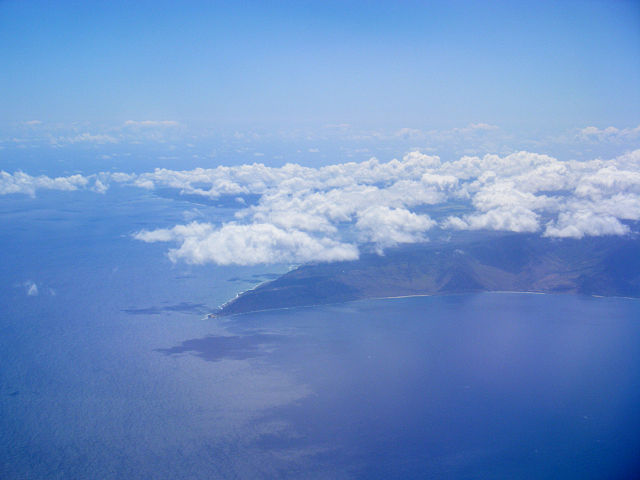Top Qs
Timeline
Chat
Perspective
Kaena Point
Westernmost tip of Oʻahu, Hawaiʻi, US From Wikipedia, the free encyclopedia
Remove ads
Remove ads



Kaʻena or Kaena Point is the westernmost tip of the island of Oʻahu. In Hawaiian, kaʻena means "the heat". The area was named after a brother or cousin of Pele. The point is designated as a Natural Area Reserve.
Remove ads
History
According to ancient Hawaiian folklore, Kaʻena Point is the "jumping-off" point for souls leaving this world.[1]
In 1899, the Oahu Railway and Land Company constructed a railway that encompassed 70 miles from Honolulu through Kahuku to transport sugarcane. Most of the tracks were destroyed by a tsunami in 1946. Parts of them are visible along the Ka'ena Point Trail.[2]
Ecology
Ka'ena Point sustains an ecosystem that is home to many native Hawaiian plants and animals.[3]
Plants:
- ‘ohai (Sesbania tomentosa)
- naupaka kahakai (Scaevola sericea)
- ‘ilima papa (Sida falax)
- naio (Myoporum sandwicense)
- pa‘u-o-Hi‘iaka (Jacquemontia ovalifolia)
- ma‘o - Hawaiian cotton (Gossypium tomentosum)
- Ka‘ena ‘akoko (Chamaesyce celastroides var. kaenana)
- hinahina (Heliotropium anomulum)
- pohinahina (Vitex rotundifolia)
- nehe (Lipochaeta integrifolia)
- 'Ahinahina (Achyranthes splendens)
Animals:
- Hawaiian monk seal (Neomonachus schauinslandi)
- Moli (Phoebastria immutabilis)
- Yellow-faced bees (Hylaeus longiceps)
Preservation

In 2011, the United States' first predator-proof fence was constructed at Ka’ena Point, costing about $290,000.[4] The fence is about 2,133 feet long (650 m), and encompasses 59 acres (24 ha) of land.[5] The population of wedge-tailed shearwater fledglings, Laysan albatross fledglings, ohia, sandalwood trees, and several other species has risen significantly.[6]
Remove ads
Access
Ka'ena Point is a park and hiking site, and is also known for snorkeling. This spot has a white sandy beach that runs from Oahu's western tip to the Waianae Mountains. A 5-mile trail (8.0 km) can be entered from Keawaula Beach or Mokuleia.[6]
Until January 28, 1998, when professional surfer Ken Bradshaw was photographed riding a wave with a reported 85-foot (26 m) face, it was believed that Greg Noll's 1969 photo had shown the largest wave ever photographed. During that famous swell in January 1998, several people reported seeing waves with 60–80-foot (18–24 m) faces at Kaʻena Point.[citation needed]
References
External links
Wikiwand - on
Seamless Wikipedia browsing. On steroids.
Remove ads
